Now and then: Do we really need five blades?
Comments: +
January 22 2010
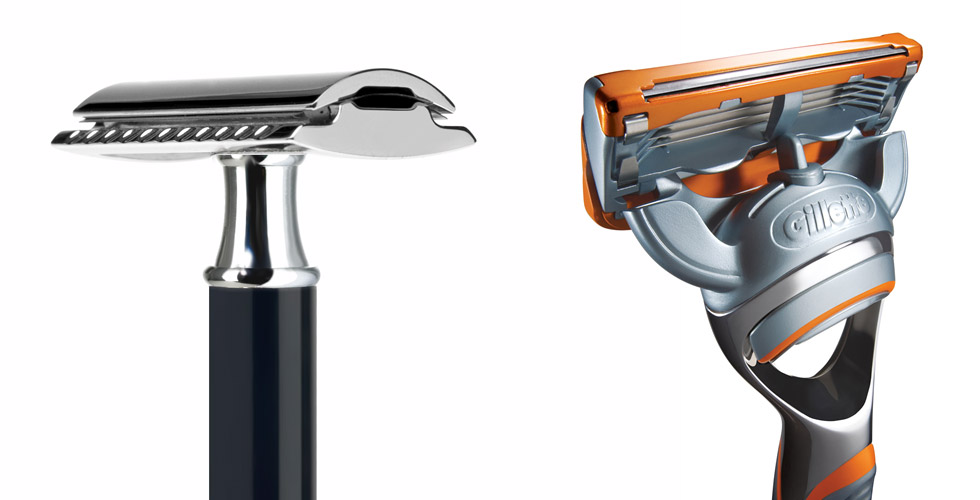
Mach3. Quattro. Fusion Power. Two centuries (and five blades) later, are razors any better today?
Industrial design is an industry that commands a lot of respect. The magic of transforming a new idea into a tangible, useful object is rarely lost on creative minds.
Gary Hustwit’s film Objectified, looked behind the scenes and revealed the hidden thought poured into everyday objects. In the film, designer Karim Rashid asked the audience to consider: “Why on earth could we have an uncomfortable chair?”
With millions of chairs designed over the course of time, how could a poorly designed chair still be produced?
It's generally assumed that products improve over time, but is this always the case? It would seem irrational to think that a vacuum cleaner from 1908 (its first year on the market) performed better than a new Dyson vacuum.
What if I told you that a razor from 1901 worked better than a Gillette Mach3?
…1901?
In the holiday rush, while hunting for a gift for my dad, I came across a store that looked unchanged since the turn of the 20th century. It sold old-world shaving supplies.
Expecting to splurge, I was struck by how cheap everything was. The nickel safety razor was only $20. And with standard razor blades around 15 cents, I was reminded of how much I was spending on shaving supplies for myself.
On a whim, I picked one up for myself. Much to my surprise, it was faster, cleaner and smoother than any other I’d ever tried. No cuts and almost impossible to produce the tiny razor bumps that I thought were a side effect of shaving in general. With the cheap price of blades I found myself wondering how it was possible, and remembering Karim Rashid’s question.
A brief investigation unearthed some oddly interesting answers.

1762
The first safety razor was invented by Jean Jacques Perret, allowing men to shave themselves without assistance (or fear of decapitation). The invention housed a straight razor, but allowed just a sliver of the blade to show through.
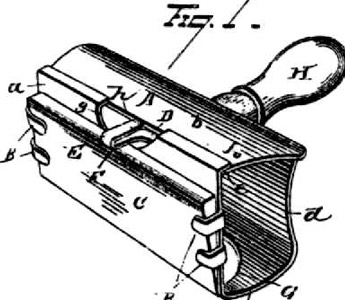
1800s
The design is refined and easier to use.

1901
Gillette invents disposable blades.
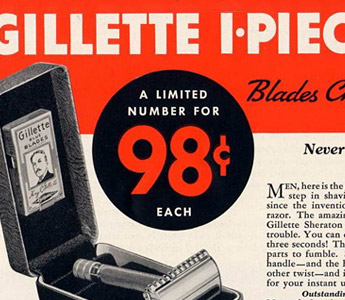
1900s—today
Freebie marketing: Gillette sells razors very cheaply (even for free after a deal with the U.S. Army provides one razor per soldier), creating a lifelong market for reusable blades, which are then marked-up. This practice is still used by Gillette and many other companies.

1960s
Switch to stainless steel blades, after Gillette is accused of exploiting customers by continuing to sell inferior carbon blades (which rust immediately).
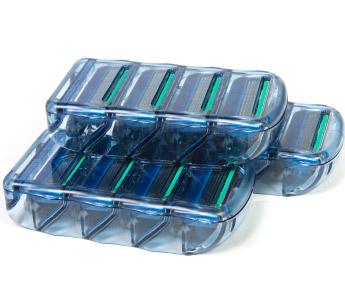
1970s
Every major razor company (Gillette, ASR, Schick, Wilkenson) simultaneously switch to cartridge razors. The companies claim the plastic cartridges make it easier to replace blades without risk of cuts. Observers note that the change gives them control over the market for blades, eliminating the many competitors who previously manufactured steel blades.
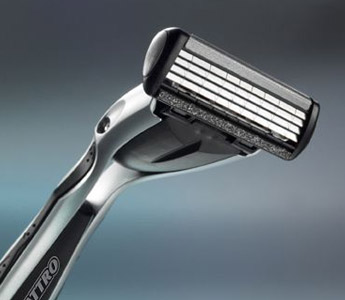
1970—today
Multiple blades are created and heavily marketed. Parodies and satires, even the admission from Schick that more blades are not better, can't curb the appetite for more blades. Up to 5 blades are now produced.

2009
The Office of Fair Trading, a British Government watchdog group, alleges collusion between manufacturers and retailers, revealing blade markups of 4,750%. A blade that costs $0.08 to produce is sold for up to $3.96.
So why are there uncomfortable chairs? Or expensive face-grinding razors?
Is it because of money? Politics? Conspiracies?
Whatever the reasons, I'll be looking at new products that come to market with a healthier dose of scrutiny. And I’ll be doing so with the cleanest shave you’ve seen since 1901.
Also see:
Filed under: culture
Comments